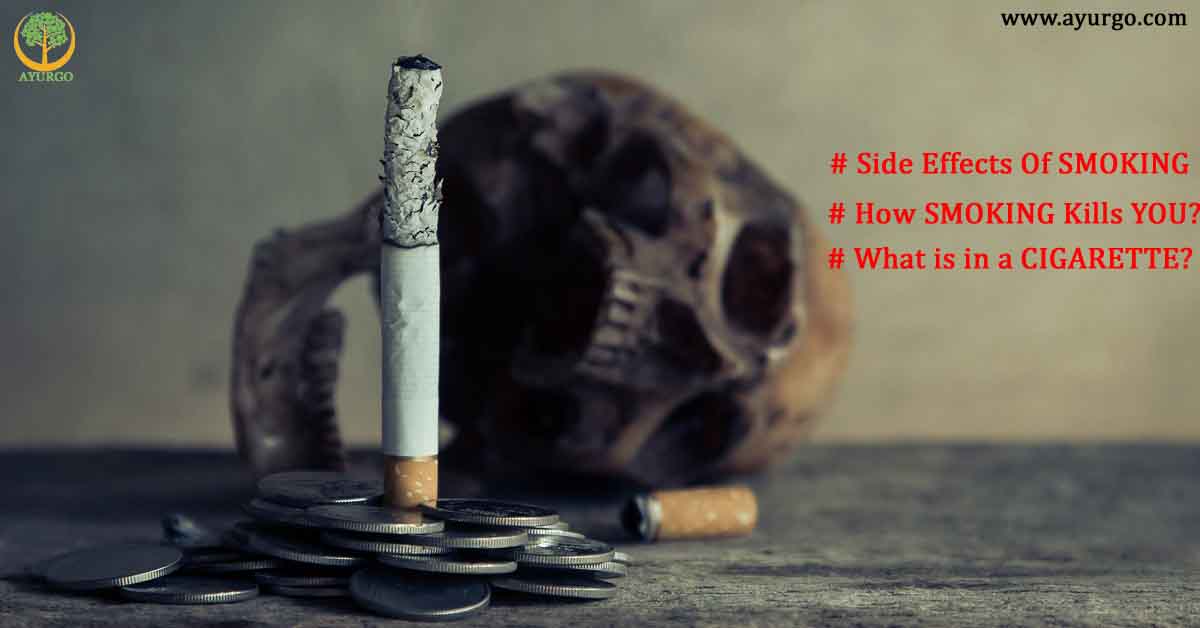Table of Contents
In this article, we will look at the side effects of smoking on the Immune system.
According to the World health organization, there are 1.1 billion smokers in the world today.
If the trend continues, that number is expected to increase to 1.6 billion by the year 2025.
If you are a smoker, you may think that it’s an issue you can deal with later, but the current evidence suggests the time is not on your side.
The world is dealing with infectious diseases on a whole different level with new diseases emerging every decade with no treatments and no vaccinations.
The only thing that can protect you is your own immune system and trust me when I say that “IF YOUR IMMUNITY IS SUPERMAN, SMOKING IS THE KRYPTONITE”
Without wasting much time lets jump directly into the side effects of Smoking on the Immune System.
Smoking harms the immune system and then makes the body less successful at fighting diseases.
The immune system is the body’s way of protecting itself from infections and diseases.
It works to fight everything from cold and flu viruses to serious conditions like Cancer.
What is in a Cigarette?

Cigarette smoke contains more than 7 thousand chemical compounds, out of which 250 are known to be harmful including Hydrogen Cyanide, Carbon monoxide, and Ammonia.
Among the 250 known harmful chemicals in tobacco smoke, at least 69 can cause CANCERS,
Smoking cigarettes introduce these chemicals into the lungs that impact all cells in the body by distribution through the oxygenated blood.
Now let’s look at some of the most harmful chemicals that are components of Tobacco smoke.
1. TAR
Tar is a word for the solid particles suspended in Tobacco smoke; the particles contain chemicals including Polycyclic Aromatic Hydrocarbons (PAHS) which are known as CARCINOGENS.
Tar is sticky and brown and stains the teeth, fingernails, as well as the Lungs.
2. CARBON MONOXIDE
Carbon monoxide is a poisonous gas, it is odorless and colorless, and in large doses, quickly causes death, because it takes the place of oxygen in your blood.
In people who smoke the carbon monoxide in their blood makes it harder for oxygen to get to their organs and tissues.
3. OXIDIZING CHEMICALS
Cigarette smoke contains a lot of oxidizing chemicals which are highly reactive chemicals that can damage the heart muscles and blood vessels.
They lead to heart diseases, stroke, and blood vessel diseases.
4. METALS
Cigarette smoke also contains a lot of METALS like Arsenic, Beryllium, Cadmium, Chromium, Cobalt, Lead, and Nickel.
How does Smoking affect your body and immune system?
The human body is comprised of billions of cells; they make up the skin, organs, blood vessels, and even your immune system.
All these chemicals weaken your immunity by depressing the abilities of the cells that are part of your immune system.
These cells include different types of White Blood Cells in your body, including your Neutrophils, Eosinophils, Basophils, and Lymphocytes.
The chemicals in cigarette smoke are an on-going source of damage to the cells throughout the body and your immune system should continually work to fight off this damage.
Eventually, your immune system cannot keep up with all the damage that is caused by these chemicals in tobacco smoke.
Another very important mechanism by which smoking affects your body is by destroying the CILIA present in your Lungs.
The CILIA are microscopic hair-like projections present on the walls of your respiratory system including the Lungs and the Airways.
Each day you breathe in about 20,000 times and the air around you contains dust and other airborne particles that would be harmful if they were allowed to accumulate in the lungs.
The Cilia secrete sticky mucus, which traps these particles and prevents them from settling in the airways, as well as these Cilia, moves forward and backward in a coordinated wave-like motion throw the mucus out of the lungs.
This keeps the lungs clean and free from infection.
According to the American Lung Association, the harmful chemicals in cigarette smoke are toxic to the cilia, resulting in their Paralysis and Inability to produce mucus effectively.
Without this filter, the potentially harmful impurities from the air remain in the airways and can cause an infection.
It is shown in a recent study that smoking not only prevents the cilia from moving correctly, but it also makes them significantly shorter, which further reduces their Efficacy.
Prolong smoking will eventually destroy them completely, making the smoker even more vulnerable to infections.
Side Effects of Smoking

Smoking increases the risks of more than a dozen diseases that can affect all systems of the body.
Some of the common infections that smokers suffer from as a result of impaired immunity include Viral and Bacterial Infections, especially of the lungs, for example, pneumonia, Influenza, and Tuberculosis.
They also suffer from Periodontal or Gum diseases, bacterial meningitis, infections that occur after the surgeries, Crohn’s disease, and many types of Cancers.
Apart from decreasing the efficacy of our immune system, smoking is known to compromise the equilibrium or the balance of the immune system.
This increases the risk of several immune and auto-immune disorders, which are diseases caused when the immune system mistakenly attacks the body’s healthy cells and tissues.
A classic example of this includes the development of COPD in Chronic smokers; people who smoke for long durations suffer from COPD or Chronic Obstructive Pulmonary Disease.
COPD is a progressive lung disease in which the healthy lung tissue gets destroyed and the patient suffers from shortness of breath, and this occurs due to the destruction of lung tissue.
The destruction of healthy lung tissue is brought by our own immune cells, like macrophages.
Smoking damages the cells present in your respiratory system, the cells then damage, release certain chemicals that signal these macrophages to destroy them.
This leads to permanent damage to the air sacks of the lungs that do not perform the basic function of gas exchange and lead to COPD.
So, these were the side effects of smoking on your immune system as well as other vital systems of your body.
Smoking can create several negative effects on your health, such as an increased risk of developing serious diseases like cancers and heart diseases, we all know that it can also lead to an early death.
While these risks are a good incentive to quit, quitting can be hard for some people because of withdrawal symptoms; these can include irritability, headaches, intense nicotine cravings, and many more.
You can read these articles to know about:
Because, it’s very important that if you smoke, you take appropriate vitamins and other measures that minimize the damage, smoking does to your body.
FAQ about Cigarettes and side effects of Smoking
How much NICOTINE is in a Cigarette?
An average cigarette contains about 12 mg of Nicotine; however, a cigarette can range from 8 mg all the way to more than 24 mg depending on the strength of the tobacco.
When you inhale the smoke from a cigarette, you aren’t absorbing all of the nicotine presents in the smoke, and then the question comes, how much nicotine is actually consumed?
It is safe to estimate that you are consuming around 1 mg of nicotine per cigarette, this number varies, depending on the person and the type of cigarette.
Every person inhales differently, and this can result in a body absorbing different amounts of nicotine.
If you are smoking a pack of cigarettes a day that comes to about 20 mg of nicotine per day the exact answer depends on the strength of the cigarette and how you smoke.
How many Chemicals are in a Cigarette?
There are more than 7000 chemical compounds in a cigarette out of which about 250 are known to be harmful.
Let’s look at the procedure of adding these chemicals to a cigarette.
The tobacco leaves are first harvested, at this point, they naturally contain highly addictive Nicotine, and their roots have absorbed heavy metals like lead and cadmium which are harmful when inhaled into the body through the smoke.
The leaves are then dried and cured, during this curing process, Cancer-causing chemicals called Tobacco-Specific NITROSAMINES, or TSNAs, form.
After curing, the tobacco leaves are then shipped to the manufacturer, while making cigarettes, the manufacturer often adds certain chemicals to the tobacco to control moisture, enhance flavor, and mask the harshness.
But some of these chemicals also cause harm. For example, manufacturers may add ammonia compounds in the tobacco, which change how easily nicotine can be absorbed into the body.
Manufacturers also may add sugars to mask hardness. These added sugars can lead to the formation of acetaldehyde which is a cancer-causing chemical that can make nicotine even more addictive.
How many Cigarettes in a pack?

There are 20 cigarettes in a pack, but it varies from country to country.
For example, In countries like Australia and Canada, there are 25 cigarettes in a pack.
Conclusion

I hope the side effects of smoking are now clear to you and can help to bring a change in your lifestyle and motivate you to quit smoking.
Do share this post with your SMOKER friends and family members on their Facebook and WhatsApp to let them know about the side effects of smoking on the immune system.


It is in point of fact a great and helpful piece of info. I am glad that you just shared this helpful info with us. Please stay us informed like this. Thank you for sharing the side effects of smoking
I am glad that you liked reading it.